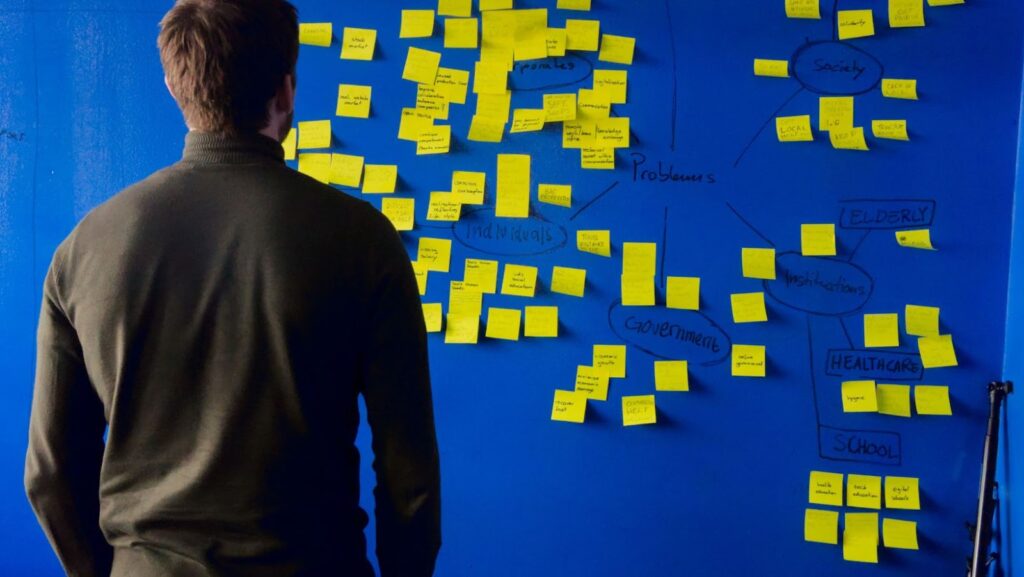
The HR department is holistically responsible for the life cycle of everyone in the company. This means that it’s at the center of everything from recruitment, development, and training to compensation and performance monitoring.
As such, the department carries a level of responsibility that can become a burden and impact overall operations if healthy and proactive measures are not taken.
The fact is that most companies are trying to put people first, with 83% of companies making changes toward a people-centric approach.
In this context, we’ll highlight two aspects: what are the common mistakes, and how can concrete actions be taken to address them and implement a system of key changes for HR? Ready to sail deep with us and find the best workarounds? Let’s jump in!
5 Mistakes in Team Management

1. Selection of Employees Who Do Not Match the Spirit of the Company
The life cycle mentioned above starts in an unfavorable way. It’s critical to understand the value that employees can add to your company’s culture. Those who do not fit the spirit and vision can negatively diminish the overall effectiveness and productivity of the organization, and this is a mistake that can have long-term consequences by
- Failing to adapt to the work environment: including teammates or supervisors
- Rejection of common values and principles
- Lack of motivation for personal and team success
- Influencing the commitment of others
Beyond the occasional dip in motivation or productivity, a key change for HR is to ensure that employees are aligned from day one. They keep the company strong, healthy, and focused in the long run, so a solid onboarding program is necessary.
2. Non-Assertive Communication
We all want clarity about what we need to do and deliver. Noise in communication to teams leads to:
- Mismatched expectations and reality: employees may feel confused about what is expected of them. This can lead to a decrease in productivity and quality of work.
- Misunderstandings about benefits and responsibilities: what is expected of them and what they will receive in return. This may result in the “I’ll only work for what they pay me” mentality may soon take its toll on performance.
- Tense environment: this will start to spread through the teams, even if it’s not everyone’s reality
Knowing the exact conditions of each position and communicating these in a direct and forceful manner is essential.
3. Lack of Development and Training Opportunities
A common mistake is to train teams when they first join the company and then leave them to fend for themselves. Ongoing training and skill development are necessary for every employee to perform to their full potential. Neglecting this will result in
- Reduced productivity: by putting a “ceiling” on their knowledge
- Stagnation: the employee may feel that they’re not progressing professionally
Many resignations are the result of a sense that a maximum has already been reached in the company and that great potential is being lost along the way.

4. Inadequate Recognition of Good Performance
Good results must be accompanied by appropriate recognition. Although we’re all about money, emotional compensation is a vital part of key changes for HR and fills a large part of a team’s professional life. Failure to recognize or reinforce the employee results in
- Demotivation: feeling undervalued
- Disconnection from the company’s vision: if you’re not there for them, they won’t be there for you
Having employees who perform well and not recognizing them accordingly will result in losing them, and you’ll be left with the lowest-performing talent.
5. Lack of Diversity and Inclusion
We live in a time of acceptance where bias in hiring or retention is unacceptable. Not implementing a policy of minority inclusion and social and racial diversity not only affects your reputation but can lead to major lawsuits.
Limiting the profile of those who make up your teams is denying yourself the opportunity to have the best possible talent. Evaluate profiles and education; these are the only filters you should use when hiring.
Now that you’re clear on what not to do – or stop doing – let’s see how we can apply key changes to make HR shine for its management.
5 Key Changes to Transform the Organization’s Reality

1. Appropriate Survey of Problem-Solving
To hire people that fit the spirit of your company, you need to look at both hard and soft skills.
One essential aspect is problem-solving, which cuts across both aspects of the job profile. Starting the hiring process with an interview question about problem solving will give you a clear and bright light on whom each potential candidate is. This will allow you to:
- Measure actual conflict resolution skills
- Understand the candidate’s feelings and perceptions about themselves in the face of these challenges.
From there, use psychometric tests and other tools to find the skills you are looking for. It’s not just about measuring performance, and it’s about looking at attitude.
2. Adequate Internal Communication Systems
Assertive communication should always be clear and direct. The idea is that you can communicate with your teams, but it should be a two-way street, always based on respect and clarity. There are two concrete actions you can take:
- Use internal communication software: it can be Slack, Zoom, or even Trello to assign tasks and communicate events
- Periodically check in with each employee: through private chats in one of these tools, make it a habit to ask everyone how they are doing, if they need anything, and let them know that your office is always open to talk about any challenge.
Being listened to is essential for an employee to feel heard and understood and to know that they can clarify any doubts that may arise. This will prevent a lot of problems in the short and long term.
3. Mentoring and Key Competency Development Programs
Develop professional development programs informed by job interview statistics, focusing on the skills needed to perform the jobs within the organization effectively. Take into account strengths observed in teams that contribute to increasing overall performance. Use:
- Mentoring: by team leaders and professionals with a long track record in the company
- Training: to develop hard and soft skills
- Scholarships for external workshops: these can be language programs or specializations
Investing in training ensures that your employees have what it takes to face whatever comes their way and that they feel they are progressing and growing within the company. This optimizes the employee lifecycle and is one of the top key changes for HR.

4. Feedback and Recognition Programs
Encourage regular recognition programs with incentives based on performance or skills that contribute to a proper work environment. That is:
- Goal attainment: when an employee reaches a numerical goal, they then receive a corresponding pay bonus
- Attitudes: aspects such as teamwork, solidarity, respect for the work schedule, and a good attitude towards performance feedback
Not just giving a bonus for going the extra mile numerically. Reward all behaviors that show they are engaged and doing their best. There is no better boost to overall productivity.
5. Diversity and Equal Opportunities Policies
We’ve talked about eliminating bias in hiring and looking at performance rather than appearance, but let’s take a few more steps. Set up training workshops:
- Minority Cultural Life Workshops: educate your employees on how to understand, know, and respect the unique characteristics of different racial, ethnic, and gender groups
- Zero Discrimination Policy: set up an anonymous hotline where any employee can report cases of internal discrimination
Many companies make serious mistakes when it comes to inclusion because they focus only on the “acceptance” of all people. However, it’s not just about being accepted; it’s also about understanding and embracing differences.
Focus on People, They Will Lead Change
If this discussion has made you aware of mistakes in your team leadership, now is the ideal time to correct them. Don’t forget to:
- Find the ideal candidates through problem-solving and skills that help them connect with your company’s vision
- Communicate directly, honestly, and assertively: back yourself up with automated and internal programs.
- Develop talent through training and ongoing mentoring.
- Recognize, reinforce, and reward good behavior and high performance: let them know that their daily contributions help make you who they are
- Promote and establish clear protocols for diversity, inclusion, and respect for everyone’s integrity.
HR is often filled with resources and very little humanity. Keep your mind, ears, and hands open to making your teams feel understood, considered and supported.
They will reward you with the best performance you’ve seen in years. For any company that wants to grow for years to come, this is the ultimate ambition.







